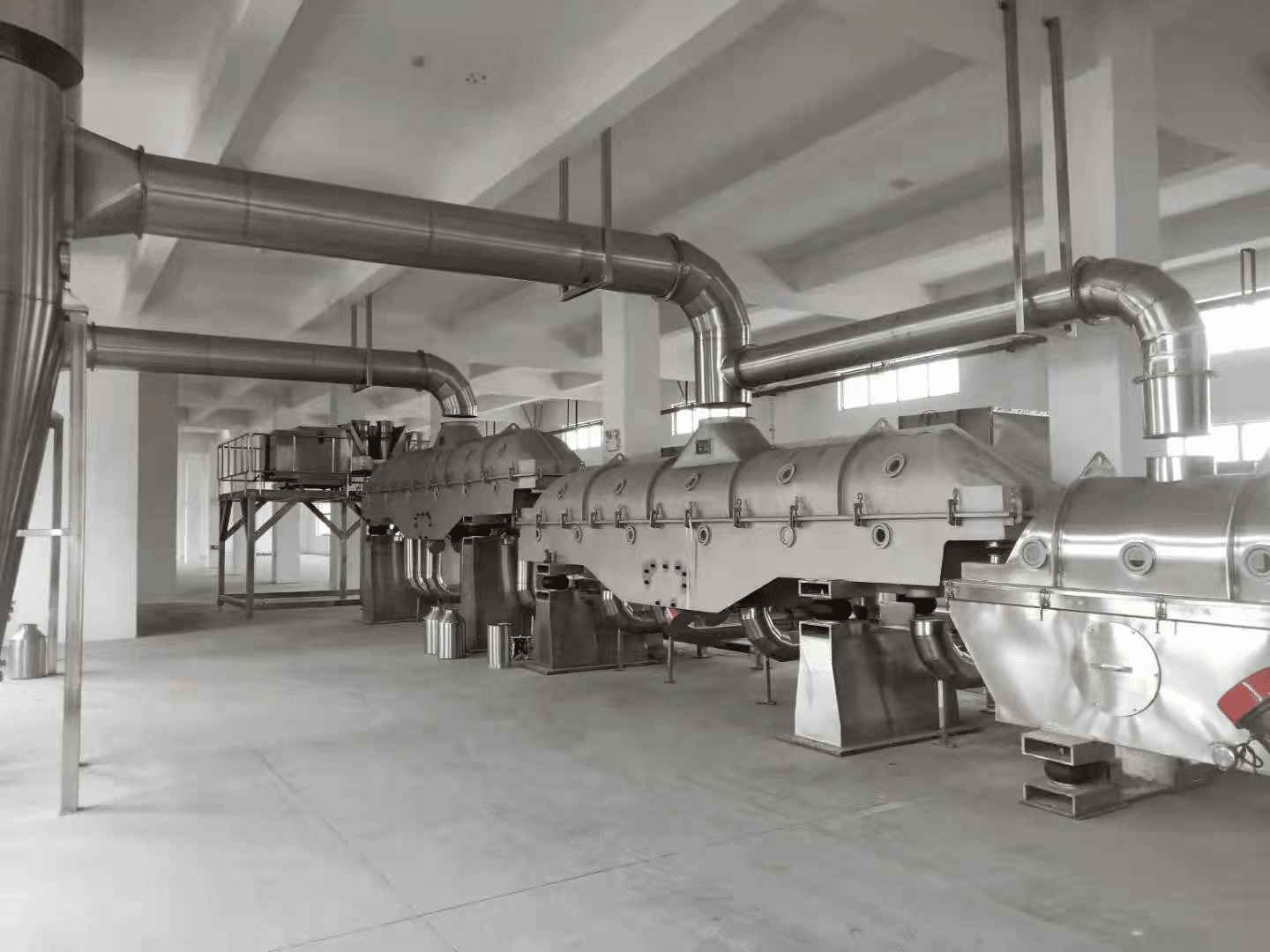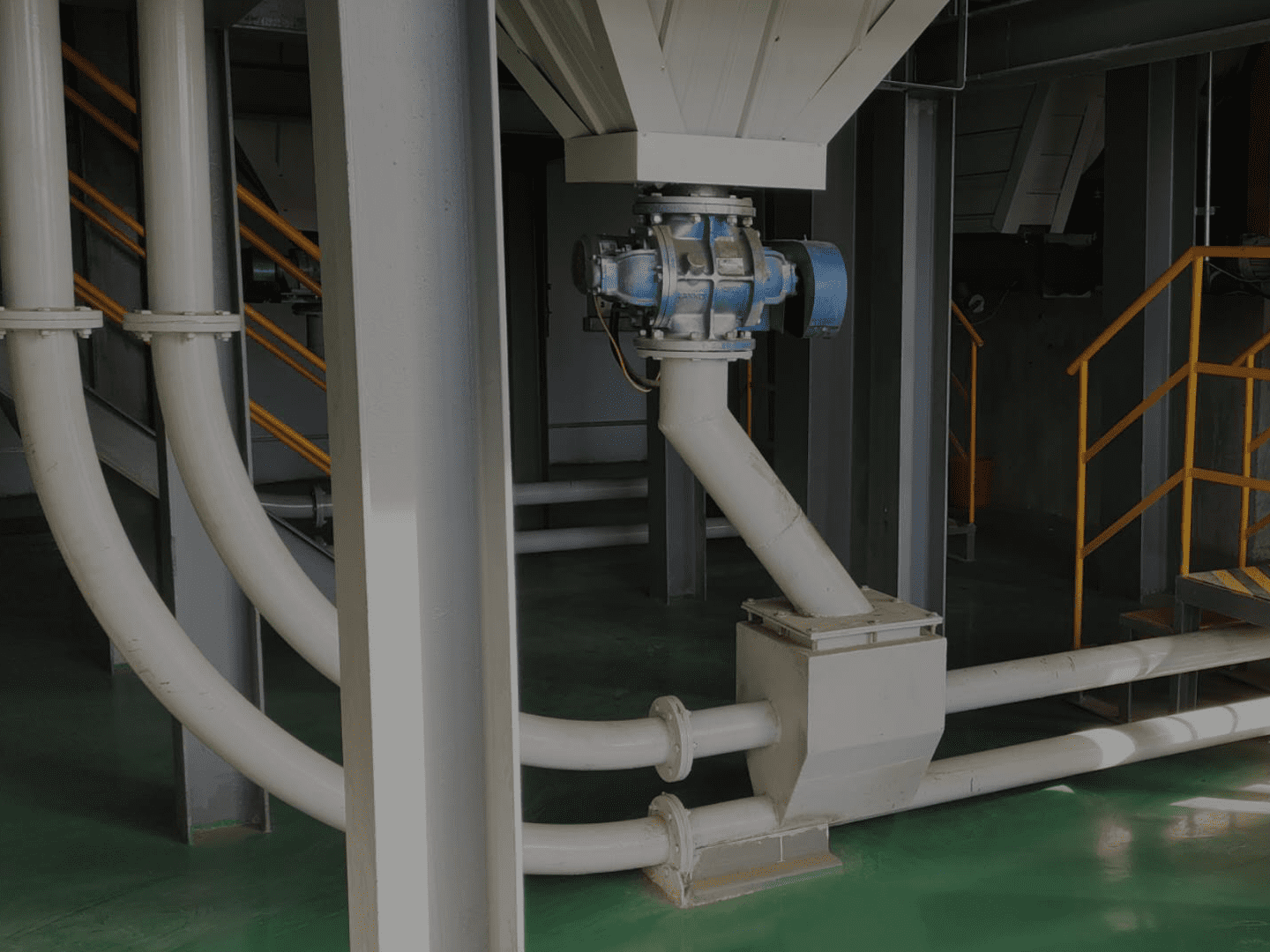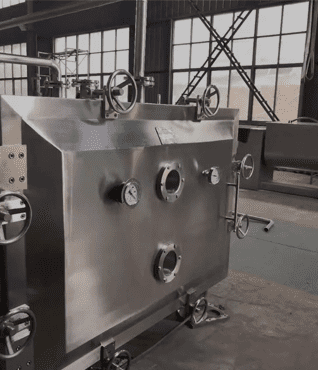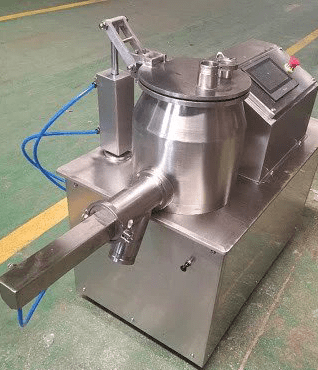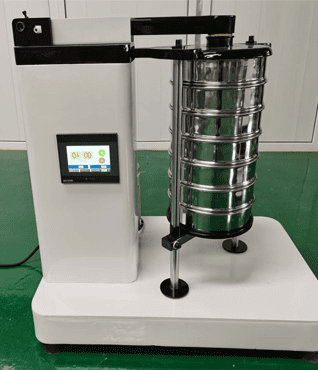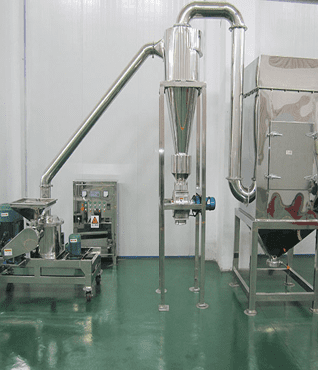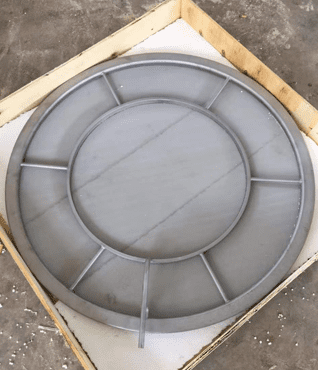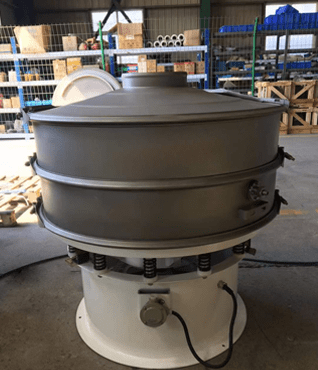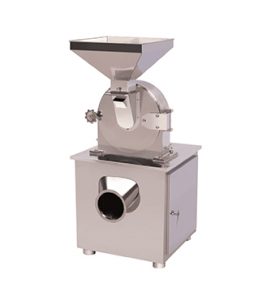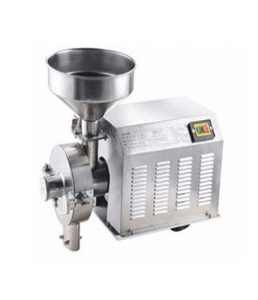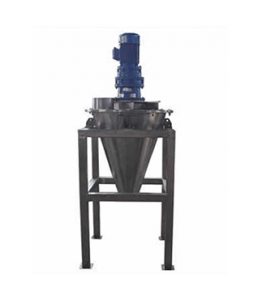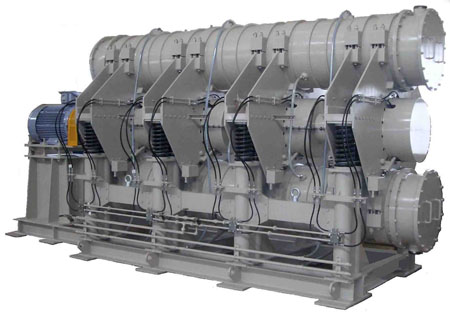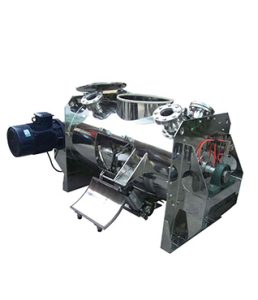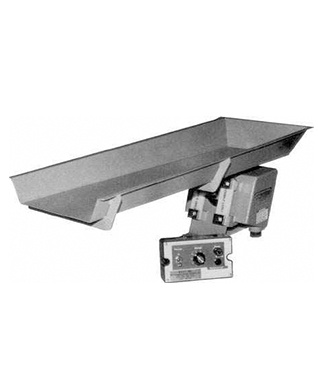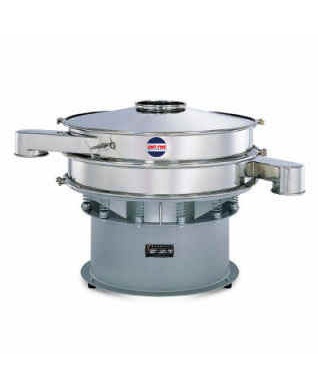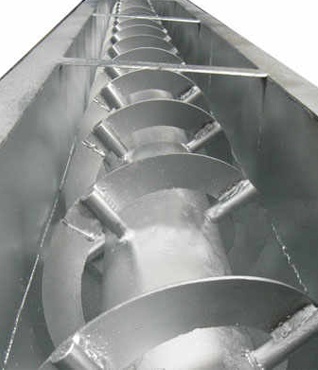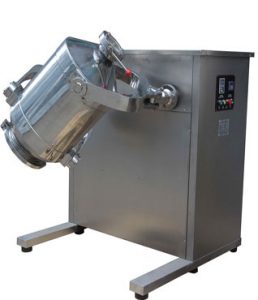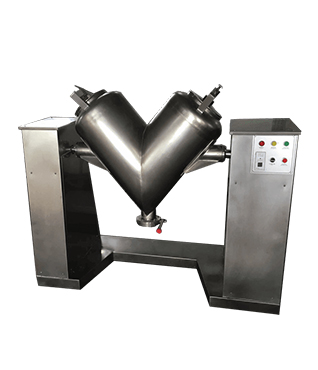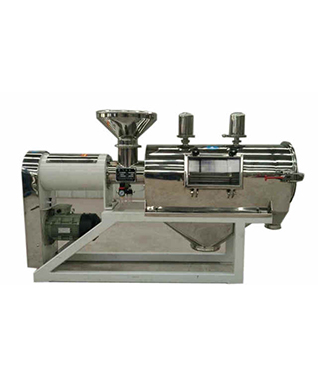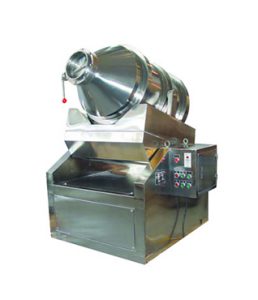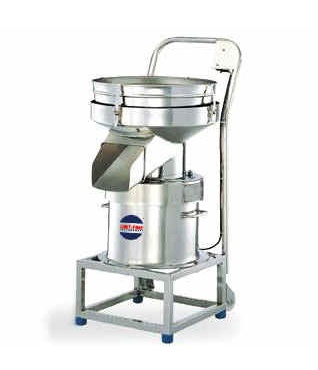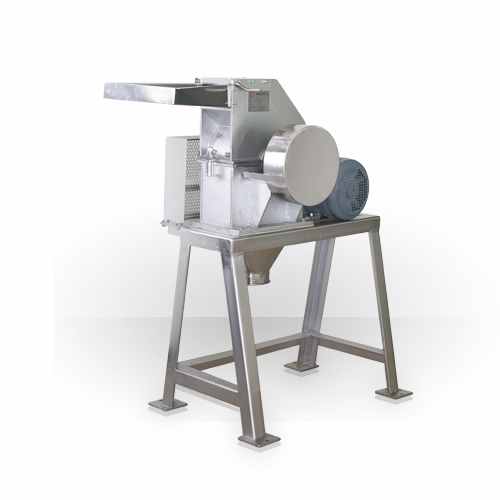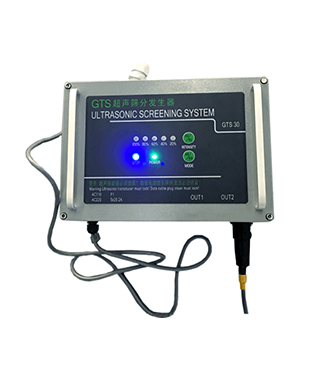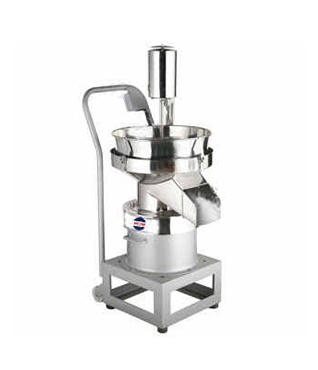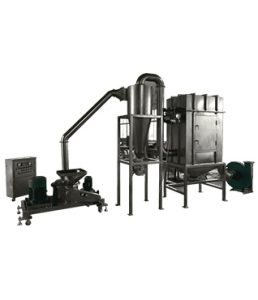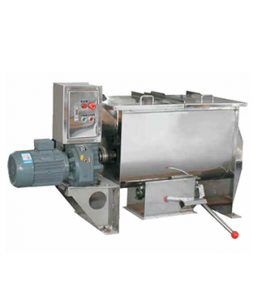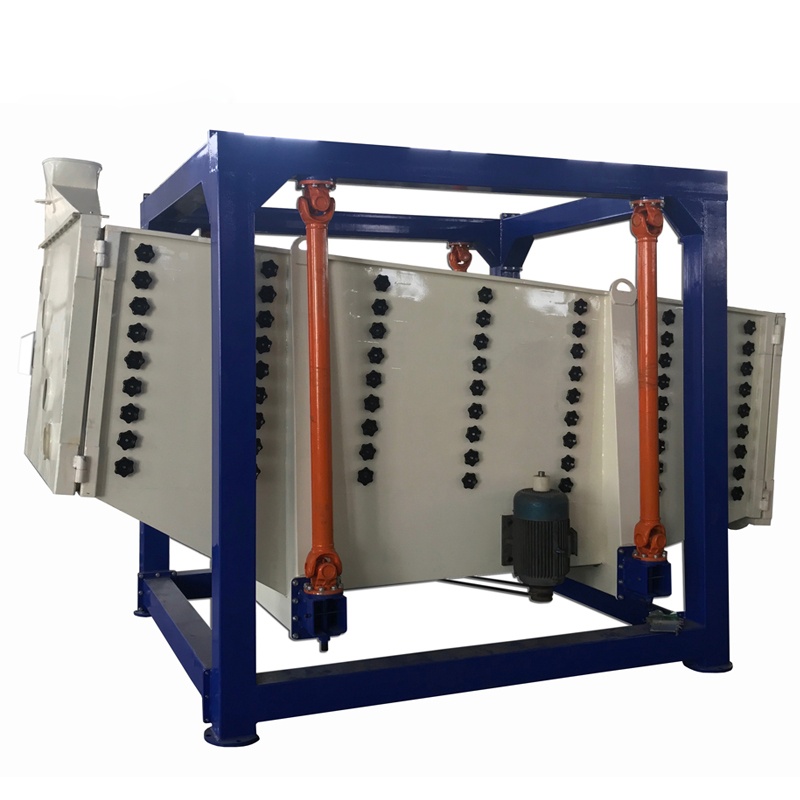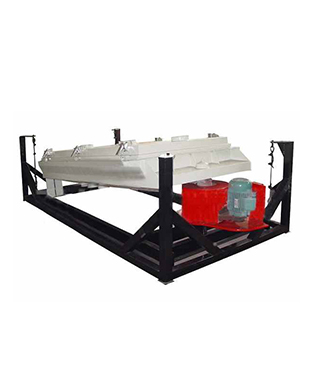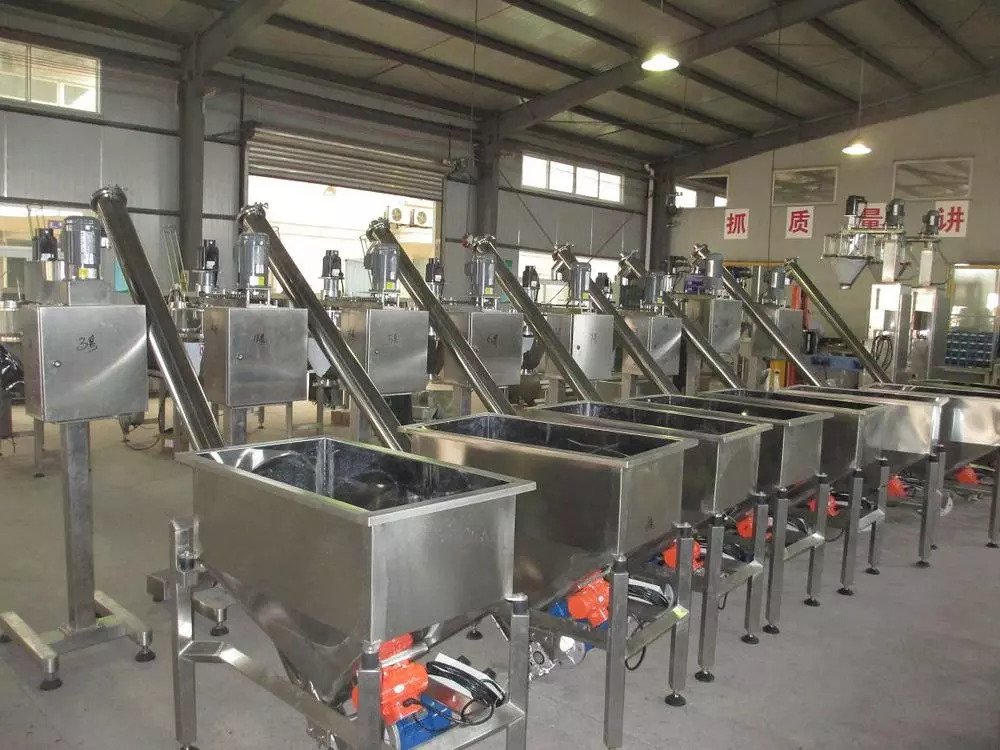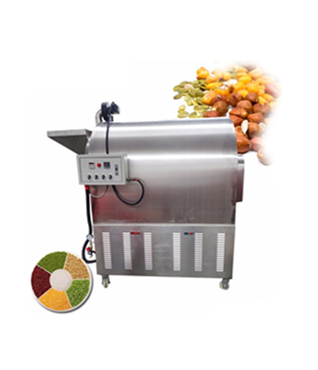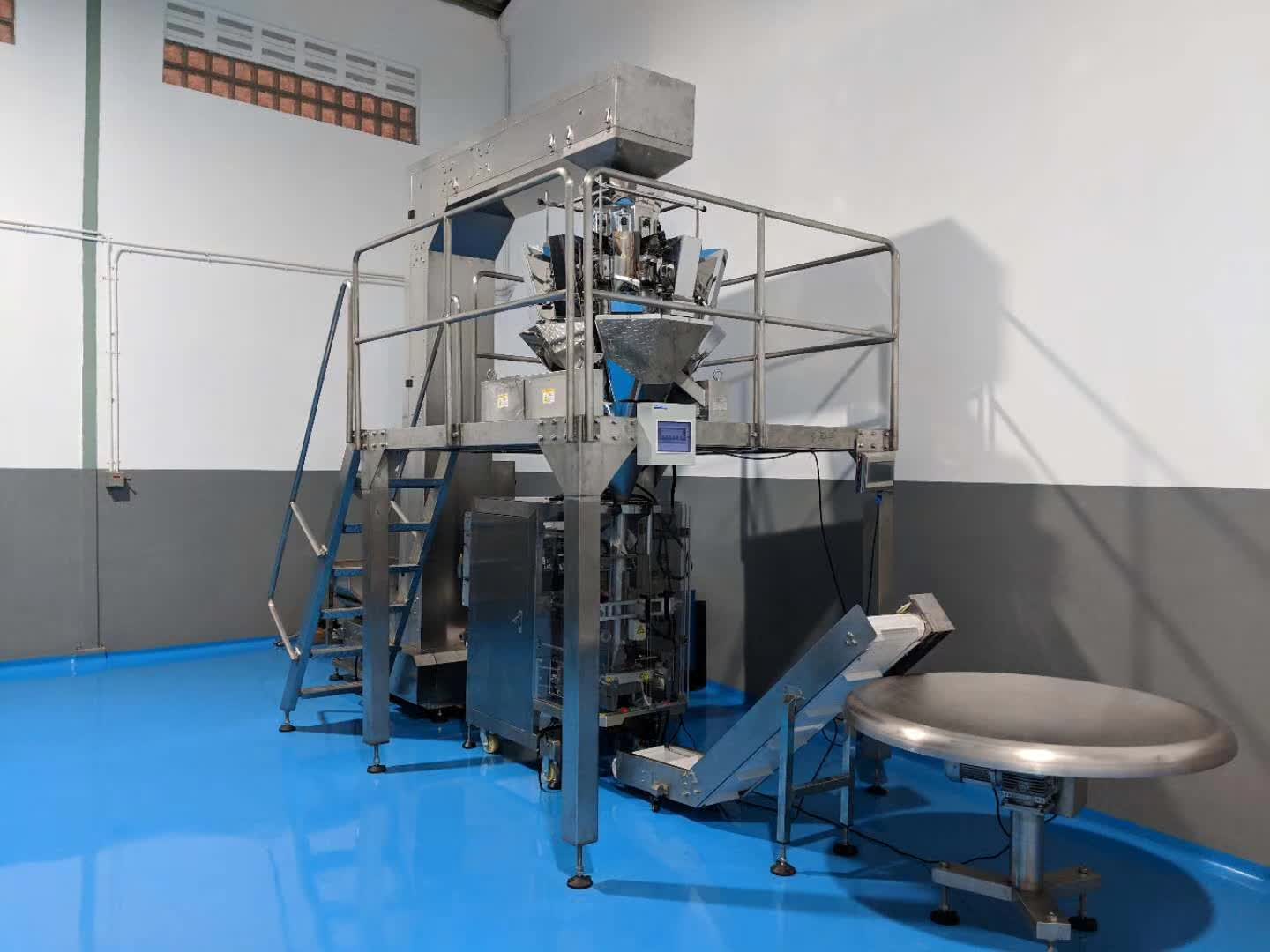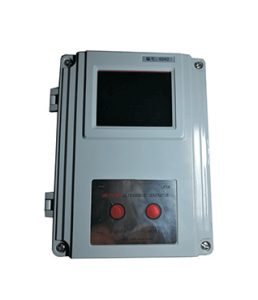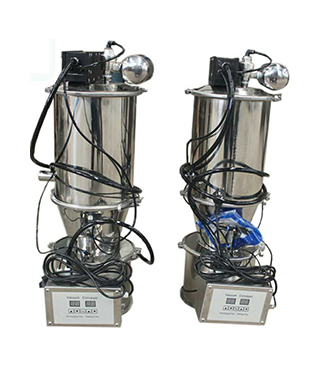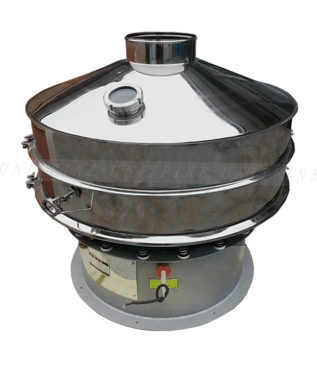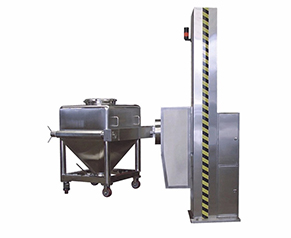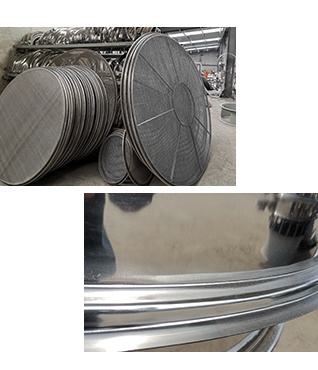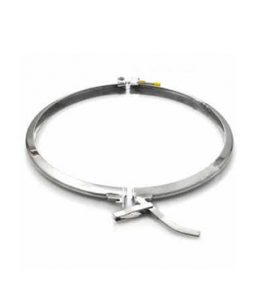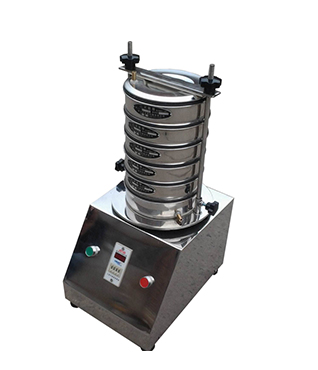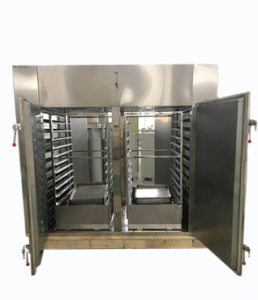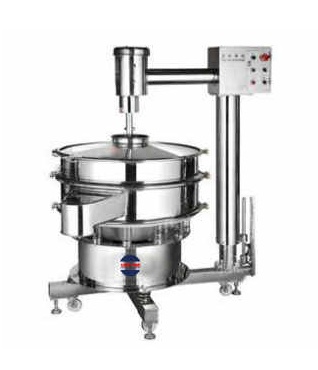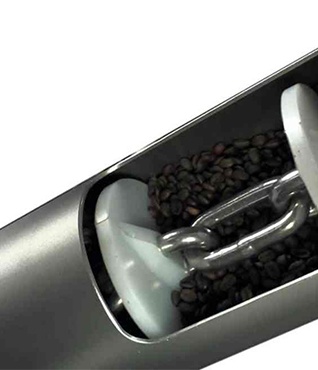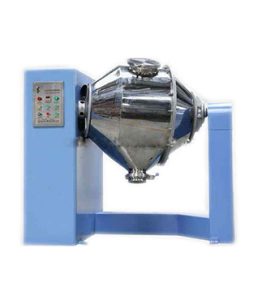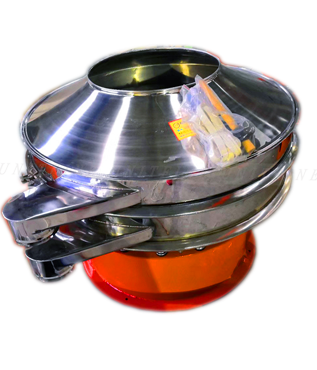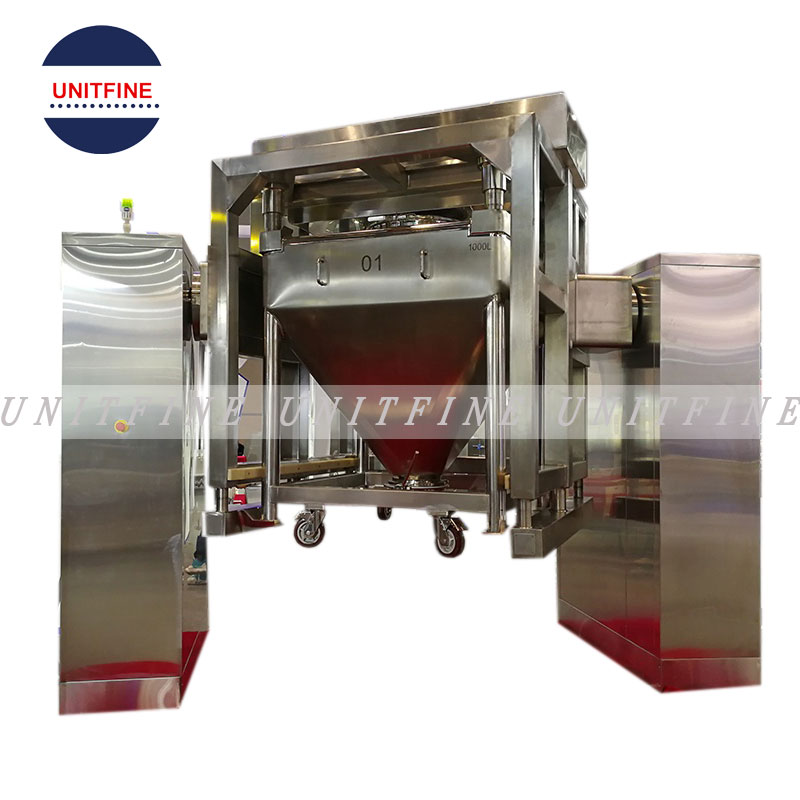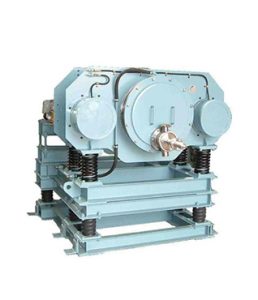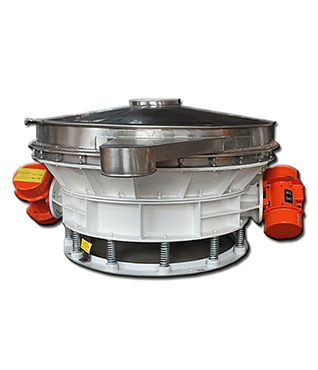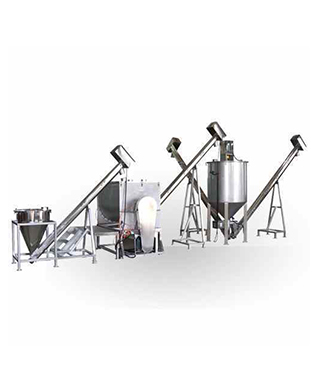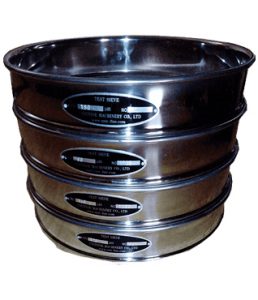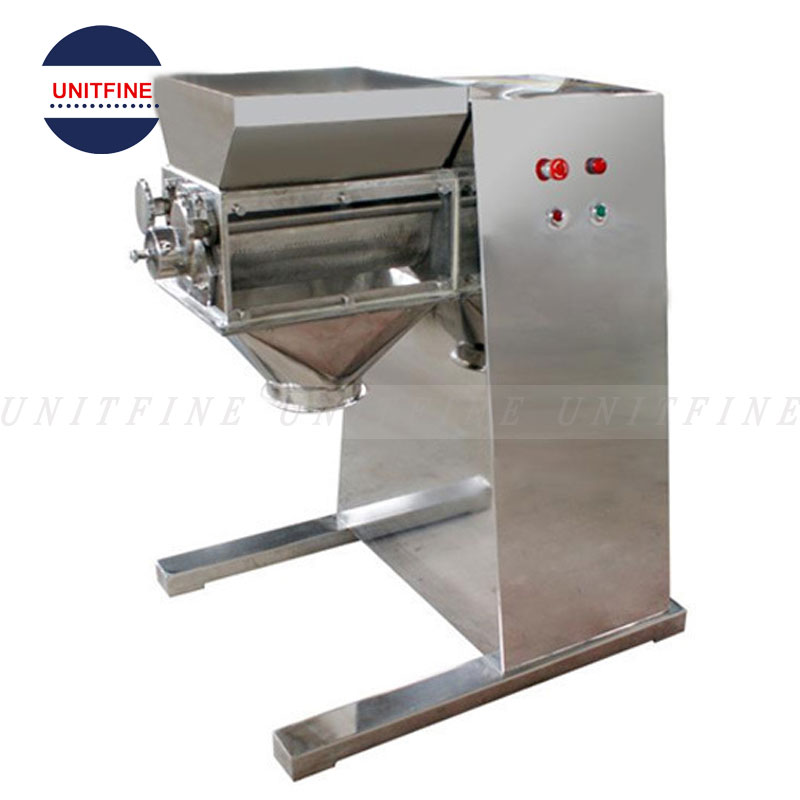OVERVIEW OF UNITFINE IBC BLENDER/MIXER
This type of machinery has a reasonable structure, offers high-efficiency and maximum mixing performance. It is relatively easy to use and has no dead corners and no exposed bolts. Different industries take advantage of IBC Bin Blenders. Among the top users of such machinery are those in the pharmaceutical, food production, and chemical industry.
While IBC Bin Blenders come in different shapes and designs, all have the same working principle. The bin fits in the IBC Blender’s lifting arms. The lifting arms will then raise the bin blender and rotates it on the predetermined speed and cycle.
The IBC Bin Blender effectively works on completing the blending procedure without the need for frequent material charging and transferring. One can be sure that the mixing process is safe from cross contamination and dust pollution. It also helps control material layering while reducing the risk of material loss.Â
The excellent thing about UnitFine’s IBC Bin Blender is that every cycle optimizes your production process. It comes with an infrared safety device to ensure safe production. It also meets the medicine production requirement of GMP.
Main Components Of The IBC Bin Blender
IBC Bin Blenders have five key components. Each component serves its purpose.
Lifting System – IBC Bin Blenders make use of a hydraulic system to lift the bin from the ground.
Driving System – This is responsible for rotating the rotary frame to initiate the blending process. It makes use of an electric motor, conveyor belts, shafts, gears, and a rotary frame.
Rotary Frame – This holds the bin securely to ensure safe and efficient blending. It rotates the bin depending on the predetermined number of cycles.
PLC Control System – This is what controls the IBC Bin Blender’s blending action. Users can use this to turn the machine on and off, control the speed of rotation, lower or lift the bin, and the speed of rotation.
Brake System – This system automatically stops the operation depending on the timer set.
How The IBC Bin Blender Works
The gyrator is at 30 degrees angle from the rotation axis. After feeding the blender, one only needs to set the desired speed and cycle to start the mixing process. It produces a high-speed and strong turning to achieve the best mixing effect. One can do this by simply manipulating the PLC Control System. Press confirm on the blender’s touch panel. The machine will automatically lift the bin, clamp it shut and start the mixing process.
After finishing the mixing cycle, the brake system will automatically stop the rotating cage from turning. Once the lifting system lowers the rotating cage one the ground, and at a horizontal position, it signals that the mixing process is now complete. One can now transfer the mixed materials for the next procedure.
Intermediate Bulk Container (IBC): The IBC mixer is designed to work with standard IBCs, which are large, stackable containers used for storing and transporting bulk materials. These containers usually have a capacity of 200 to 1,000 liters and are equipped with a top-opening hatch or lid for material loading and unloading.
Mixer Frame or Support Structure: The IBC mixer is typically mounted on a robust frame or support structure. This frame holds and secures the IBC during the mixing process, ensuring stability and safety.
Mixing Mechanism: The core of the IBC mixer is its mixing mechanism, which can vary depending on the specific design and application. Common mixing mechanisms include:
a. Rotating Drum or Tumbler: Some IBC mixers use a rotating drum or tumbler design. The IBC is mounted horizontally or at an angle, and it rotates to mix the contents thoroughly.
b. Screw Conveyor: In certain applications, a screw conveyor may be used to transport and mix materials within the IBC.
Drive Mechanism: To power the mixing mechanism, IBC mixers are equipped with a drive mechanism. This can be an electric motor, pneumatic motor, or hydraulic motor, depending on the design. The motor provides the necessary rotational or reciprocating motion to the mixing element.
Control System: IBC mixers are typically equipped with a control system that allows operators to start, stop, and adjust the mixing process. It may include speed control for the mixing mechanism and safety features to protect both the equipment and operators.
Loading and Unloading: Materials are loaded into the IBC through the top hatch or lid. Once mixing is complete, the IBC can be rotated or tilted to facilitate the discharge of the blended materials.The working principle of an IBC mixer involves activating the mixing mechanism (e.g., rotating drum) using the drive mechanism. As the mixing element rotates or moves, it creates agitation and blends the materials within the IBC. The operator can control the speed and duration of the mixing process to achieve the desired level of blending.
- An IBC (Intermediate Bulk Container) mixer is a specialized industrial equipment designed for mixing and blending materials within standard IBC containers. The features of an IBC mixer can vary depending on the specific design and manufacturer, but here are some common features and characteristics you might find in an IBC mixer:
- Compatible with Standard IBCs: IBC mixers are typically designed to work with standard Intermediate Bulk Containers, which are available in various sizes and designs. This compatibility ensures ease of use and interchangeability of containers.
- Mixing Mechanism: IBC mixers can employ different types of mixing mechanisms, including:
- Rotating Drums or Tumblers: Some IBC mixers use a horizontally or diagonally mounted drum or tumbler to mix materials by rotating the IBC.
- Screw Conveyors: In certain applications, screw conveyors can be used to transport and mix materials within the IBC.
- Drive Mechanism: IBC mixers are equipped with a drive system to power the mixing mechanism. The drive mechanism can be electric, pneumatic, hydraulic, or mechanical, depending on the design and application.
- Control Panel: A control panel is often integrated into the IBC mixer, allowing operators to start, stop, and adjust the mixing process. It may include features like speed control, timer settings, and safety interlocks.
- Sturdy Frame or Support Structure: IBC mixers are typically mounted on a robust frame or support structure to provide stability during the mixing process. This structure also ensures safety by preventing accidental movement.
- Safety Features: Safety is a crucial consideration in industrial equipment. IBC mixers may include safety features such as emergency stop buttons, overload protection, and guarding to protect operators and prevent damage to the equipment.
- Material Compatibility: The materials used in the construction of the IBC mixer, such as stainless steel or corrosion-resistant coatings, are chosen to be compatible with the types of materials being mixed, ensuring hygiene and preventing contamination.
- Easy Loading and Unloading: IBC mixers are designed to facilitate the loading of materials into the container and the unloading of blended materials. This may involve features such as hinged lids, discharge ports, and tilt mechanisms.
- Mobility Options: Some IBC mixers are mounted on wheels or casters, allowing for easy movement within the facility, especially when multiple IBCs need to be mixed or transported.
- Customization Options: Manufacturers may offer customization options to tailor the IBC mixer to specific industry requirements. This can include variations in mixing speed, capacity, and mixing element design.
- Cleanability: Hygienic design is crucial in industries like food and pharmaceuticals. IBC mixers are often designed with smooth surfaces, easy-to-clean components, and sanitary connections to ensure thorough cleaning and prevent cross-contamination.
- Compliance with Industry Standards: IBC mixers may need to meet industry-specific standards and regulations, such as those related to safety, materials handling, and sanitary design, depending on the application.
- Maintenance and Serviceability: Easy access to components and maintenance points is important to ensure that the equipment can be serviced and maintained effectively, minimizing downtime.
These features make IBC mixers versatile and suitable for a wide range of industries where efficient mixing and blending of bulk materials are required. The specific features of an IBC mixer will depend on the manufacturer, model, and intended application.
Intermediate Bulk Container (IBC) mixers are versatile industrial equipment used in various industries to efficiently mix and blend bulk materials. The applications of an IBC mixer include:
Pharmaceuticals and Biotechnology:
Mixing and blending powders, granules, or liquids for drug formulations.
Preparing buffer solutions and media for biopharmaceutical processes.
Food and Beverage:
Mixing ingredients for food processing, such as sauces, dressings, and beverages.
Homogenizing dairy products like yogurt and cream.
Preparing beverage concentrates and emulsions.
Chemicals and Petrochemicals:
Blending chemicals for paint, adhesive, and coating manufacturing.
Mixing raw materials in chemical reactions.
Preparing chemical solutions and suspensions.
Cosmetics and Personal Care:
Mixing cosmetic formulations like lotions, creams, and shampoos.
Blending fragrances and essential oils. Homogenizing skincare products.
Agrochemicals and Agriculture:
Mixing pesticides, fertilizers, and herbicides for agricultural applications.
Preparing liquid fertilizers and nutrient solutions.
Blending animal feed ingredients.
Water Treatment and Wastewater Management:
Mixing chemicals for water treatment processes, such as flocculation and coagulation.
Preparing polymer solutions for sludge dewatering.
Blending additives for wastewater treatment.
Mining and Minerals Processing:
Agitating and blending mineral slurries in ore processing.
Mixing chemicals for flotation and separation processes.
Preparing drilling muds for mining exploration.
Construction and Building Materials:
Mixing and homogenizing cementitious materials for concrete production.
Preparing mortar, grout, and plaster mixes.
Blending additives and chemicals for construction products.
Environmental Remediation:
Mixing soil and groundwater treatment chemicals for environmental cleanup.
Preparing reagents for soil stabilization and solidification.
Plastics and Polymers:
Blending polymer pellets, resins, and additives for plastics manufacturing.
Mixing colorants and pigments in plastic production.
Preparing polymer solutions and dispersions.
Metalworking and Fabrication:
Mixing metalworking fluids and coolants for machining operations.
Homogenizing metal plating solutions.
Blending lubricants and cutting oils.
Paints and Coatings:
Mixing paint formulations for automotive, industrial, and decorative applications.
Blending coatings, varnishes, and sealants.
Preparing ink and dye solutions.
Adhesives and Sealants:
Mixing adhesives and sealant formulations.
Blending silicone sealants and caulking compounds.
Homogenizing epoxy resins and adhesives.
Research and Development:
Pilot-scale blending and mixing of experimental materials and compounds.
Development of new formulations and products in laboratories.
Custom Manufacturing:
Tailoring IBC mixer designs to meet specific industry requirements and unique material blending needs.
IBC mixers are crucial in achieving uniformity and consistency in various industrial processes, improving product quality and efficiency. Their versatility makes them suitable for a wide range of industries that deal with bulk materials.




